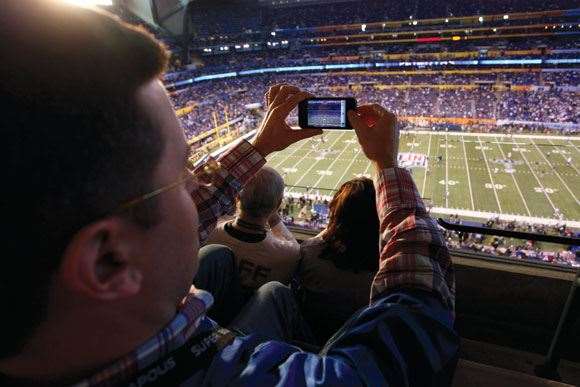Sports, social media and impulse control, the power of social media’s reach is hard to deny
 photo by Getty Images
photo by Getty ImagesSports, social media and impulse control, the power of social media’s reach is hard to deny
Last month, a university student in Wales was sent to prison for being the worst kind of sports fan. The 21-year-old had sent out a noxious tweet, revelling in the on-field heart attack of Bolton midfielder Fabrice Muamba. It was his responses that followed, though, full of racist content, that saw him charged and convicted with inciting racial hatred. He was sentenced to 56 days behind bars.
Yet another cautionary tale about sports, social media and impulse control, to be added to the litany of Stephanie Rice’s feelings about South African rugby, Joel Monaghan’s dog and the entire St Kilda Girl episode. The periodic scandals that arise from all the online chattering were enough to convince the prudent to stay away. But the power of social media’s reach was hard to deny – this was something more serious than being able to air a clever sledge.
Indeed, the way the future looks at this moment, it’s hard to see how social media would do without sports. Tech mogul/uberfan Mark Cuban has noted that for all the niftiness of the new communication channels, they’re still most effectively driven by old-fashioned spectacle; the kind that live sport provides. This year’s Super Bowl set a record for Twitter traffic, with 12,233 per second, a total that was supercharged by the growth of tablet computing. Television programmers have come up with a term for it – big games, Oscar ceremonies or royal weddings have become “two-screen experiences”.
Sports fandom has long brought people together; now, fans don’t have to turn up to games to make a connection. All manner of teams, leagues and associations are beginning to catch onto the potential of how they can engage their fans in this space. “Sport is the greatest currency in social media that is undervalued,” says George Tomeski, founder of Australian firm PlayUp. Tomeski found inspiration, as many sports fans do, by a late-night viewing session on the couch in 2006, flicking between a historic South African run chase in a one-dayer against Australia, an English Premier League football match and text-messaging mates about the goings-on. “We were counting down the ball-by-ball each over, wondering whether or not South Africa could score 12 an over.”
The PlayUp app provides a mobile-based social network, except this one isn’t based around looking at other people’s embarrassing party pictures. The nub is the sport you’re watching, whether it’s with friends in a private hangout or the mass of spectators in a public one. Tomeski notes that PlayUp’s utility was aimed at the SMS market – in the United States there are more than 100 times as many texts sent per second as tweets. “You look at messaging in Facebook or Twitter – none of it is real-time,” he says. “I can’t sit there and natter with you about Rooney’s penalty and whether he’ll kick it or not.
“That real-time event thing is key. The last couple of years, we’ve seen a lot of content produced about watching sport on your phone. We don’t think that’s where the game will be at. We might be proven wrong, but we think the mobile will be the device you use to engage and interact about what you’re watching, rather than what you’re watching.”
PlayUp’s experience in international markets is instructive, particularly its rapid growth in areas such as China and India. The latter particularly has been fertile ground, with cricket serving as all-purpose social media kindling. According to Tomeski, mapping their mobile users in India with Facebook, they found it to be among the most engaged Facebook communities globally. “We have a quarter of a million in any given second of the day who are interacting with us, answering a poll about cricket, playing a game, posting. That’s 24-7, and when cricket’s on, that spikes up considerably.”
It’s an audience to sell to – social gaming (think Scrabulous and the like) has proven to be popular, while the ticketing business is intrigued in how it can use all the available data to fill seats. PlayUp’s next idea is to drill down and spread the network to smaller-scale sporting events, like the local footy match or school swimming carnival. Soon enough, the crowd’s cheers will be followed by the whir of mobile devices.
‒ Jeff Centenera
Related Articles

Morri: Social media done right

McIlroy: Golf ball change won't affect average golfers













